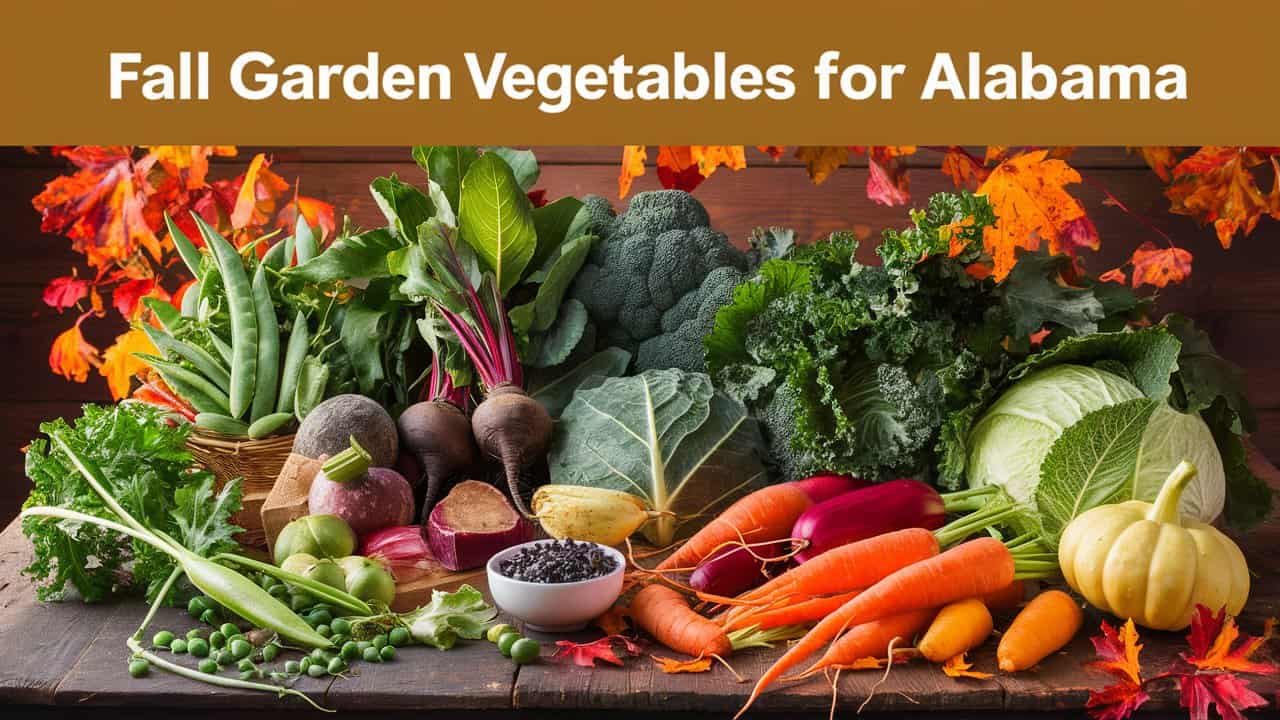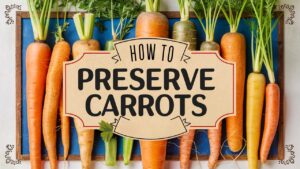When it comes to choosing the right vegetables for your fall garden in Alabama, it’s essential to select varieties that are well-suited to the state’s climate and growing conditions. Here are some top picks for fall vegetables that thrive in Alabama’s autumn weather:
Broccoli: A Cool-Season Superstar

Broccoli is one of the most popular fall garden vegetables in Alabama, and for good reason. This cool-season crop thrives in the state’s mild autumn weather, producing delicious, nutrient-rich florets that are perfect for snacking, sautéing, or adding to soups and stews.
When to Plant: In Alabama, the ideal time to plant broccoli is in late summer to early fall, about 8 to 10 weeks before the first frost. This allows the plants to mature before the cold weather sets in.
How to Plant: Broccoli prefers well-draining, fertile soil with a pH between 6.0 and 7.0. Sow seeds 1/4 inch deep and 2-3 inches apart in rows that are 2-3 feet apart. Thin seedlings to 12-18 inches apart as they grow.
Tips and Varieties: Look for broccoli varieties specifically bred for the Southeast, such as ‘Deep Purple’ or ‘Blue Wind’, which are more resistant to heat and humidity. Consider growing a mix of broccoli varieties to extend the harvest season and enjoy a range of flavors and textures.
Cauliflower: The Ultimate Versatile Veggie
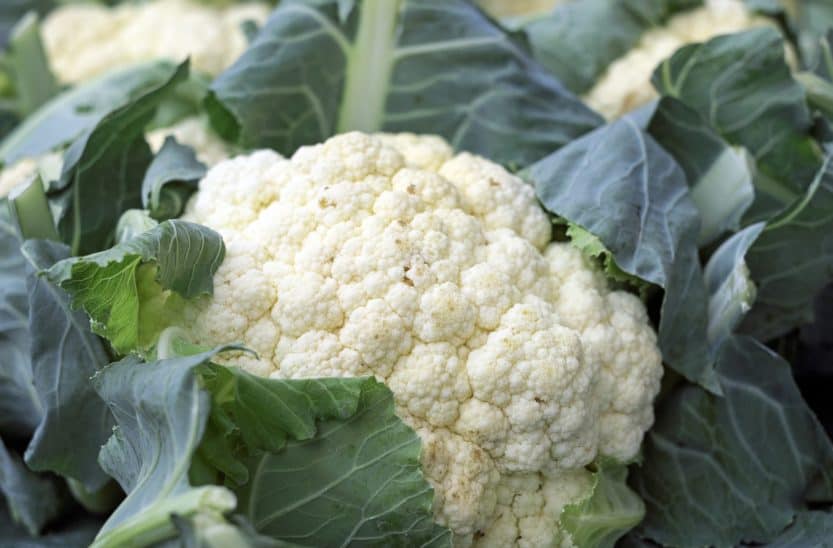
Cauliflower is another cool-season crop that excels in Alabama’s fall climate. This versatile vegetable can be steamed, roasted, sautéed, or even used as a low-carb substitute for grains.
When to Plant: Cauliflower is typically planted 2-4 weeks later than broccoli, as it requires a slightly longer growing season. In Alabama, aim to plant cauliflower in early to mid-fall, about 6-8 weeks before the first frost.
How to Plant: Cauliflower prefers similar soil conditions to broccoli, with a slightly higher pH tolerance (up to 7.5). Sow seeds 1/4 inch deep and 2-3 inches apart in rows that are 2-3 feet apart. Thin seedlings to 18-24 inches apart as they grow.
Tips and Varieties: Cauliflower comes in a range of colors and shapes, from traditional white to vibrant purple and orange. Try growing ‘Snow Crown’ or ‘Graffiti’ for a pop of color in your fall garden. For added convenience, look for self-blanching varieties like ‘Self-Blanche’ or ‘Casper’, which don’t require wrapping or covering to produce white curds.
Kale: The Queen of Leafy Greens
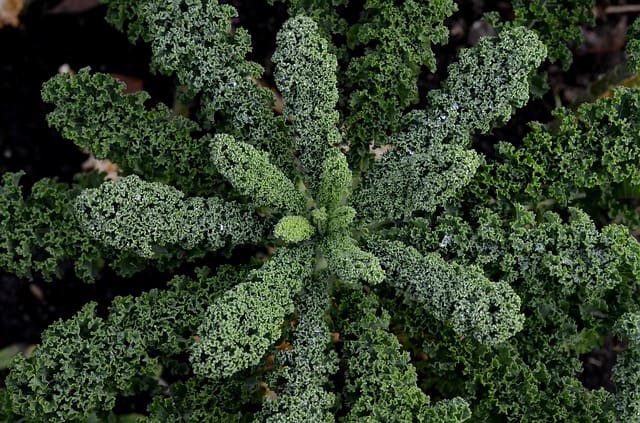
Kale is a hardy, cool-season crop that’s perfect for Alabama’s fall gardens. This superfood is packed with vitamins, minerals, and antioxidants, making it a nutritious addition to salads, smoothies, and sautéed dishes.
When to Plant: Kale can be planted in late summer or early fall, about 8-10 weeks before the first frost. However, in Alabama’s mild climate, kale can also be grown as a winter crop, planted in late fall or early winter.
How to Plant: Kale prefers well-draining, fertile soil with a pH between 6.0 and 7.0. Sow seeds 1/4 inch deep and 2-3 inches apart in rows that are 2-3 feet apart. Thin seedlings to 12-18 inches apart as they grow.
Tips and Varieties: Look for kale varieties specifically bred for the Southeast, such as ‘Lacinato’ or ‘Russian Red’, which are more resistant to heat and humidity. Consider growing a mix of kale varieties to extend the harvest season and enjoy a range of flavors and textures. For added convenience, try growing ‘baby kale’ or ‘leaf lettuce’ varieties, which mature more quickly and require less space.
Spinach – The Cool-Season Superstar
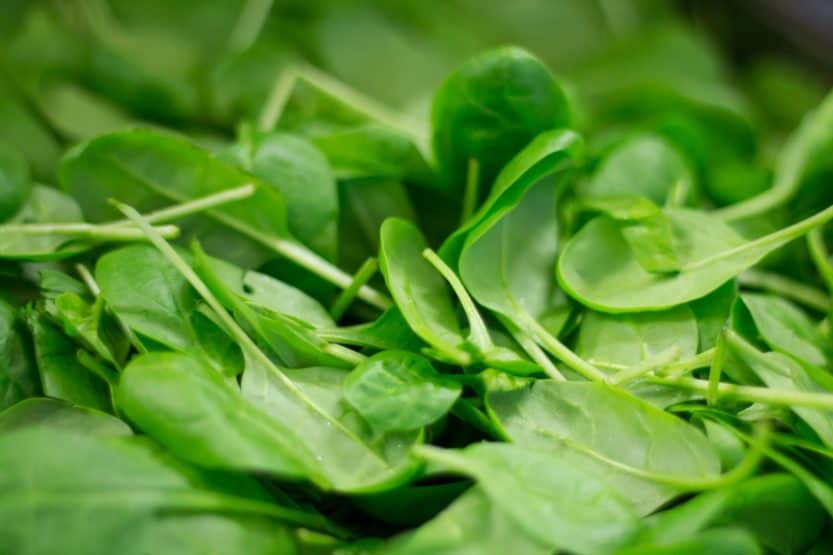
Spinach is one of the most popular fall garden vegetables in Alabama, and for good reason. This cool-season crop thrives in the state’s mild autumn temperatures, producing a bountiful harvest of nutritious leaves. Here are some tips for growing spinach in your Alabama fall garden:
- Varieties: Look for heat-tolerant and bolt-resistant varieties like ‘Tyee’ or ‘Space’ for optimal performance in Alabama’s fall climate.
- Soil and Sun: Spinach prefers well-draining, fertile soil with a pH between 6.0 and 7.0. Choose a spot that receives partial shade, especially in warmer areas of the state.
- Sowing: Direct sow spinach seeds in late summer or early fall, about 8 weeks before the first frost. Sow thinly, 1-2 inches apart, and 1/4 inch deep.
- Care: Keep the soil consistently moist, but not waterlogged. Fertilize with a balanced fertilizer once a month. Spinach is a low-maintenance crop, but regular watering and weeding will promote healthy growth.
- Harvest: Begin harvesting individual leaves or the entire plant when the leaves reach 2-3 inches in length. Pinch off blooms to encourage leaf production.
Lettuce – The Crunchy Crop for Fall
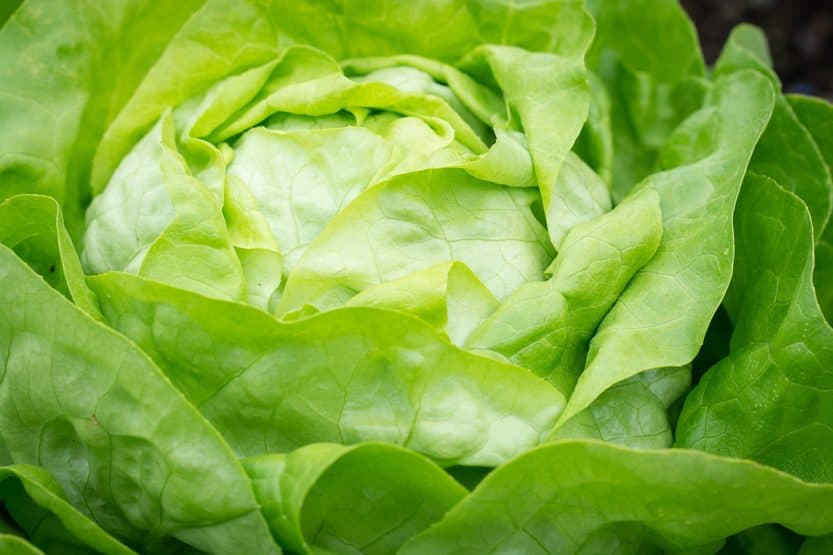
Lettuce is another popular fall garden vegetable in Alabama, offering a delicious and crunchy addition to salads and sandwiches. With the right varieties and care, you can enjoy a continuous harvest of fresh lettuce throughout the autumn season.
- Varieties: Choose varieties specifically bred for fall production, such as ‘Rouge d’Hiver’ or ‘Winter Density’. These types are more resistant to bolting and can tolerate light frosts.
- Soil and Sun: Lettuce prefers well-draining soil with a pH between 6.0 and 6.5. Select a location with partial shade, especially in warmer areas, and ensure good air circulation to prevent fungal diseases.
- Sowing: Sow lettuce seeds in late summer or early fall, about 6-8 weeks before the first frost. Plant in rows, 2-4 inches apart, and 1/8 inch deep.
- Care: Keep the soil consistently moist, but not waterlogged. Fertilize with a balanced fertilizer once a month. Regular watering and weeding will promote healthy growth and prevent pests.
- Harvest: Begin harvesting individual leaves or the entire head when the leaves reach 2-3 inches in length. Use scissors to cut the leaves at the base, and the plant will continue to produce new growth.
Radish – The Speedy Root for Fall
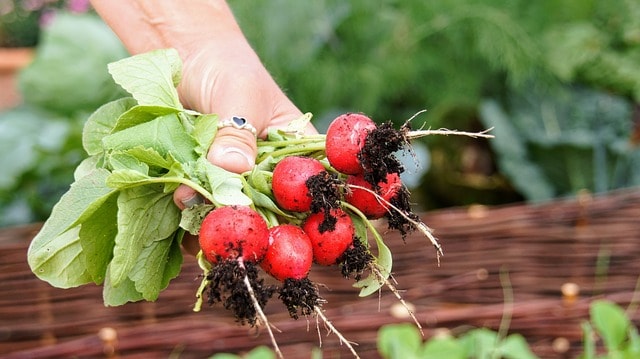
Radishes are one of the fastest-growing fall garden vegetables in Alabama, maturing in as little as 20-25 days. With their spicy flavor and crunchy texture, radishes add a delicious burst of flavor to salads, slaws, and sandwiches.
- Varieties: Look for varieties specifically bred for fall production, such as ‘Cherry Belle’ or ‘White Icicle’. These types are more resistant to bolting and can tolerate light frosts.
- Soil and Sun: Radishes prefer well-draining soil with a pH between 6.0 and 7.0. Choose a location with full sun to partial shade, and ensure good air circulation to prevent fungal diseases.
- Sowing: Sow radish seeds in late summer or early fall, about 4-6 weeks before the first frost. Plant in rows, 1-2 inches apart, and 1/4 inch deep.
- Care: Keep the soil consistently moist, but not waterlogged. Radishes require minimal care, but regular watering and weeding will promote healthy growth.
- Harvest: Begin harvesting radishes when they reach 1-2 inches in diameter. Use a fork to gently loosen the soil around the radish, then lift it out of the ground. Trim the leaves and wash before using.
Turnips: A Spicy and Sweet Addition to Your Fall Garden
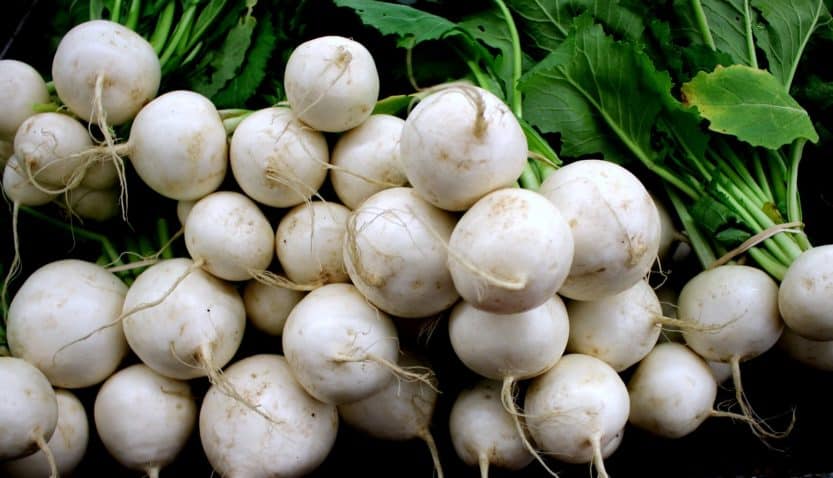
Turnips are a versatile and underrated root vegetable that can add a burst of flavor and nutrition to your fall garden. In Alabama, turnips can be planted in late summer or early fall, about 8 weeks before the first frost. Choose a variety that’s specifically bred for southern climates, such as ‘Purple Top’ or ‘White Lady’, and make sure to plant them in well-draining, loose soil with a pH between 6.0 and 7.0.
- Sowing Tips: Sow turnip seeds ¼ inch deep and 1 inch apart in rows that are 12 inches apart. Thin the seedlings to 2-3 inches apart as they grow.
- Maintenance: Keep the soil consistently moist, but not waterlogged. Turnips are relatively low-maintenance, but they may require some support as they grow.
- Pest and Disease Control: Keep an eye out for common turnip pests like aphids, slugs, and snails. Regularly inspect your plants for signs of disease like yellowing leaves or black spots.
- Harvesting: Turnips are ready to harvest when they’re between 1-3 inches in diameter. Use a garden fork to carefully dig them up, taking care not to damage the roots.
Rutabaga: The Unsung Hero of Fall Vegetables

Rutabagas are a cross between a cabbage and a turnip, and they offer a sweet, earthy flavor that’s perfect for roasting, mashing, or adding to soups and stews. In Alabama, rutabagas can be planted in late summer or early fall, about 10 weeks before the first frost. Choose a variety that’s specifically bred for the south, such as ‘Laurentian’ or ‘Harris Model’, and plant them in well-draining, fertile soil with a pH between 6.0 and 7.0.
- Sowing Tips: Sow rutabaga seeds ¼ inch deep and 1 inch apart in rows that are 18 inches apart. Thin the seedlings to 6-8 inches apart as they grow.
- Maintenance: Keep the soil consistently moist, but not waterlogged. Rutabagas are relatively low-maintenance, but they may require some support as they grow.
- Pest and Disease Control:** Keep an eye out for common rutabaga pests like cabbage loopers, aphids, and slugs. Regularly inspect your plants for signs of disease like yellowing leaves or black spots.
- Harvesting: Rutabagas are ready to harvest when they’re between 3-5 inches in diameter. Use a garden fork to carefully dig them up, taking care not to damage the roots.
Cabbage: The King of Cool-Season Crops
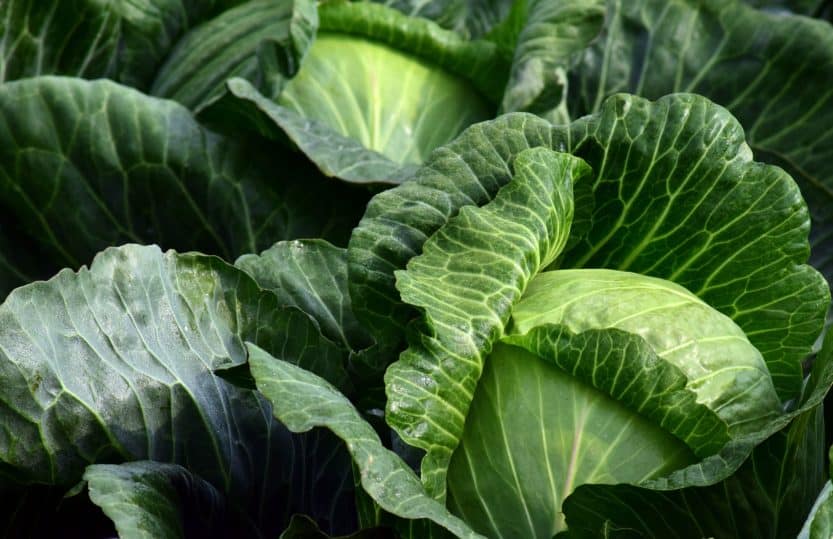
Cabbage is a staple of the fall garden, and for good reason – it’s packed with vitamins, minerals, and antioxidants, and it’s incredibly versatile. In Alabama, cabbage can be planted in late summer or early fall, about 12 weeks before the first frost. Choose a variety that’s specifically bred for the south, such as ‘Early Jersey Wakefield’ or ‘Red Acre’, and plant them in well-draining, fertile soil with a pH between 6.0 and 7.0.
- Sowing Tips: Sow cabbage seeds ¼ inch deep and 1 inch apart in rows that are 18 inches apart. Thin the seedlings to 12-18 inches apart as they grow.
- Maintenance: Keep the soil consistently moist, but not waterlogged. Cabbage requires more maintenance than turnips and rutabagas, so be prepared to provide support as the heads form.
- Pest and Disease Control:** Keep an eye out for common cabbage pests like cabbage loopers, slugs, and snails. Regularly inspect your plants for signs of disease like yellowing leaves or black spots.
- Harvesting: Cabbage is ready to harvest when the heads are firm and compact. Use a sharp knife to cut the head from the stem, leaving a small portion of stem attached to the plant.
Carrot: A Crunchy and Delicious Addition to Your Fall Garden
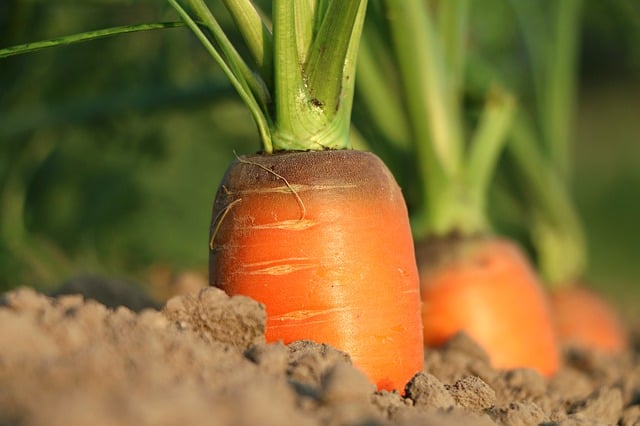
Carrots are a cool-season crop that thrive in Alabama’s mild fall weather. They’re relatively easy to grow, and with the right techniques, you can enjoy a bountiful harvest of crunchy, sweet carrots. Here are some tips to get you started:
- Choose the right variety: Look for varieties that are resistant to nematodes, such as ‘Little Finger’ or ‘Danver’s Half-Long’. These varieties are well-suited for Alabama’s climate and soil.
- Prepare the soil: Carrots prefer well-draining, loose soil that’s free of rocks and debris. Mix in some organic matter like compost or well-rotted manure to improve soil structure.
- Sow seeds correctly: Sow carrot seeds about ¼ inch deep and ¼ inch apart in late summer or early fall, about 8-10 weeks before the first frost. You can also sow every 2-3 weeks for a continuous harvest.
- Thin and care for seedlings: Once the seedlings emerge, thin them to about 1-2 inches apart. Keep the soil consistently moist, but not waterlogged. Mulch around the plants to retain moisture and suppress weeds.
- Watch for pests and diseases: Keep an eye out for pests like rabbits, deer, and carrot rust flies. Regularly inspect your plants for signs of disease like leaf blight or root rot.
With proper care and attention, you can enjoy a delicious harvest of carrots in as little as 60-70 days. Harvest them when they’re between ½ to 1 inch in diameter for the best flavor and texture.
Beet: A Root Vegetable That’s Sweet and Savory

Beets are another cool-season crop that excel in Alabama’s fall climate. They’re easy to grow, and their sweet and earthy flavor makes them a great addition to many dishes. Here’s what you need to know to grow beets in your fall garden:
- Choose the right variety: Opt for varieties like ‘Detroit Dark Red’ or ‘Golden Beet’ for their sweet flavor and tender texture. You can also grow chioggia beets for their striking white and red striped roots.
- Sow seeds correctly: Sow beet seeds about ¼ inch deep and ¼ inch apart in late summer or early fall, about 8-10 weeks before the first frost. You can also sow every 2-3 weeks for a continuous harvest.
- Thin and care for seedlings: Once the seedlings emerge, thin them to about 2-3 inches apart. Keep the soil consistently moist, but not waterlogged. Mulch around the plants to retain moisture and suppress weeds.
- Watch for pests and diseases: Keep an eye out for pests like aphids, whiteflies, and slugs. Regularly inspect your plants for signs of disease like leaf spot or root rot.
- Harvest at the right time: Harvest beets when they’re between 1-3 inches in diameter for the best flavor and texture. You can also harvest the greens, which make a delicious addition to salads and sautés.
Collard: A Nutritious and Delicious Leafy Green for Alabama Gardens
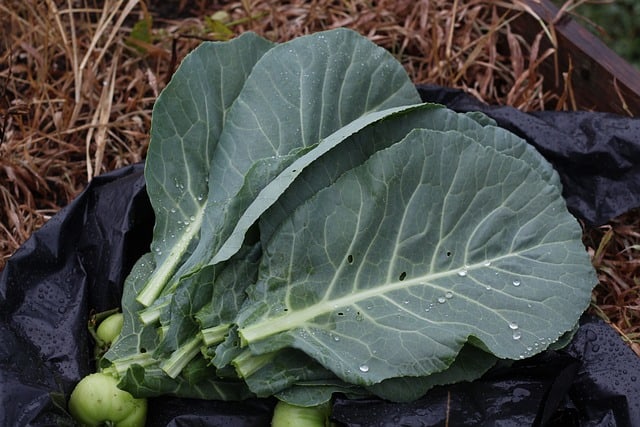
Collards are a staple crop in many Southern gardens, and for good reason. They’re easy to grow, packed with nutrients, and can be harvested continuously throughout the fall season. Here’s what you need to know to grow collards in your Alabama garden:
- Choose the right variety: Opt for varieties like ‘Georgia’ or ‘Vates’ for their tender leaves and cold hardiness. You can also grow ‘Champion’ or ‘Flash’ for their faster maturation rate.
- Sow seeds correctly: Sow collard seeds about ¼ inch deep and ¼ inch apart in late summer or early fall, about 8-10 weeks before the first frost. You can also sow every 2-3 weeks for a continuous harvest.
- Thin and care for seedlings: Once the seedlings emerge, thin them to about 12-18 inches apart. Keep the soil consistently moist, but not waterlogged. Mulch around the plants to retain moisture and suppress weeds.
- Watch for pests and diseases: Keep an eye out for pests like aphids, whiteflies, and slugs. Regularly inspect your plants for signs of disease like leaf spot or root rot.
- Harvest continuously: Harvest collard leaves when they’re about 10-12 inches tall, usually in as little as 50-60 days. Simply snip off the leaves with scissors or pinch them off with your fingers, and the plants will continue to produce new growth.
Collards are a nutritious and delicious addition to many dishes, from soups to salads to sautés. With proper care and attention, you can enjoy a continuous harvest of collards throughout the fall season.
Mustard: A Southern Staple for Fall Gardens
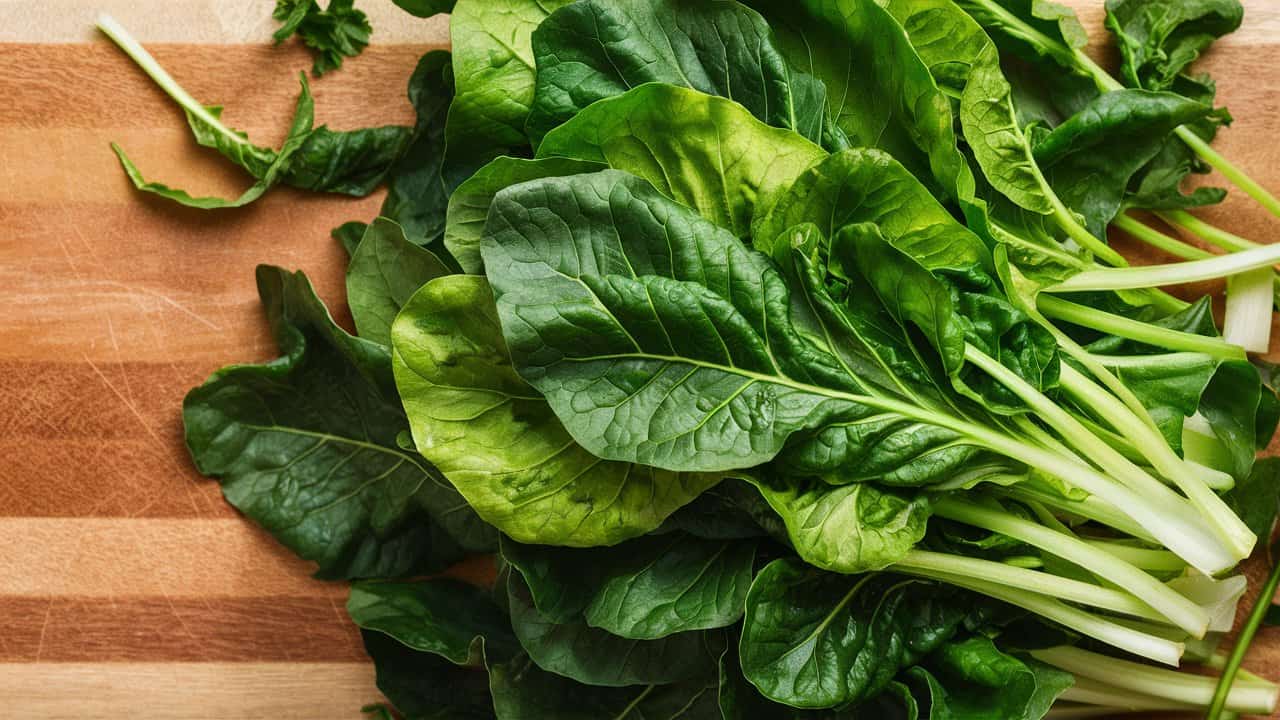
Mustard is a cool-season crop that thrives in Alabama’s mild fall weather. This versatile vegetable is a staple in many Southern gardens, and for good reason. Not only is it easy to grow, but it’s also packed with nutrients and can be used in a variety of dishes, from salads to soups.
In Alabama, the ideal time to plant mustard is in late summer to early fall, about 8-10 weeks before the first frost. Sow seeds 1-2 inches deep and 2-3 inches apart in well-draining soil with a pH between 6.0 and 7.0. Keep the soil consistently moist, but not waterlogged, and provide partial shade to full sun.
Some popular varieties of mustard for fall gardens in Alabama include:
- Florida Broadleaf: A heat-tolerant variety that’s perfect for Alabama’s warm falls.
- Red Giant: Adds a pop of color to salads and slaws with its deep red leaves.
- Mustard Greens: A mild-flavored variety that’s great for cooking and adding to soups.
Brussels Sprouts: A Cool-Season Crop for Alabama’s Fall Gardens
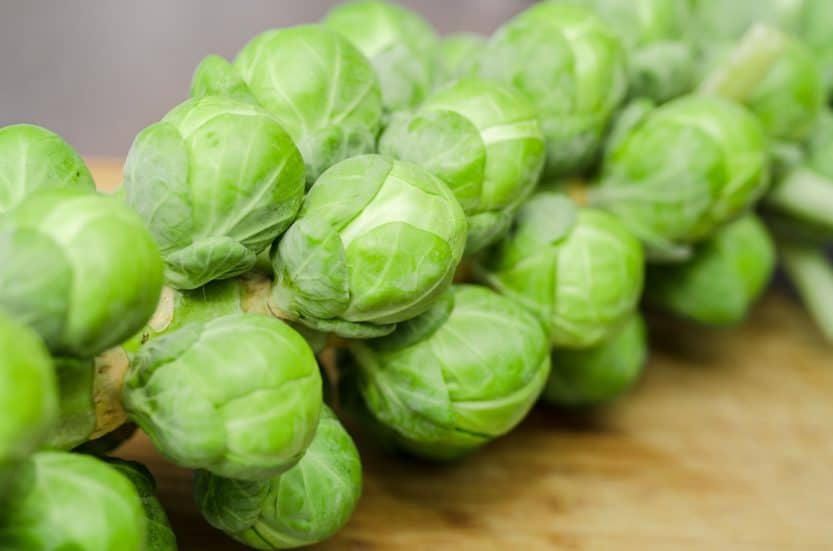
Brussels sprouts are a cool-season crop that can be a bit finicky, but with the right growing conditions, they can thrive in Alabama’s fall gardens. These tiny, cabbage-like vegetables are rich in vitamins and antioxidants, making them a nutritious addition to any meal.
In Alabama, the ideal time to plant Brussels sprouts is in early fall, about 12-14 weeks before the first frost. Sow seeds 1-2 inches deep and 2-3 inches apart in well-draining soil with a pH between 6.0 and 7.0. Provide partial shade to full sun and keep the soil consistently moist, but not waterlogged.
Some tips for growing Brussels sprouts in Alabama’s fall gardens include:
- Choose a variety that’s resistant to heat and humidity, such as ‘Long Island Improved’ or ‘Jade Cross.’
- Plant Brussels sprouts in a spot that receives afternoon shade to prevent scorching.
- Mulch around the plants to retain moisture and suppress weeds.
Okra: A Warm-Season Crop for Alabama’s Fall Gardens
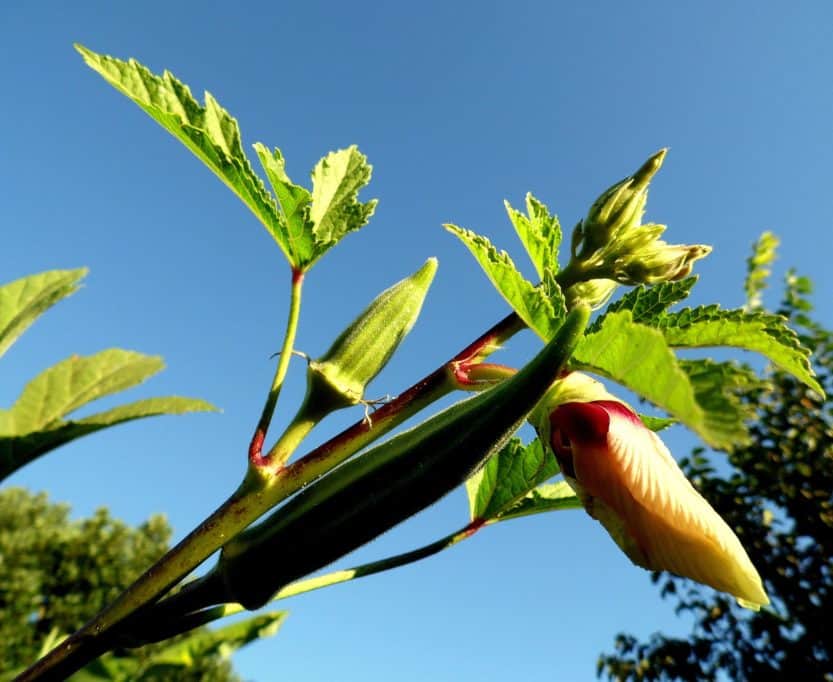
Okra is a warm-season crop that’s commonly associated with summer gardens, but it can also thrive in Alabama’s fall gardens. This heat-loving vegetable is perfect for adding a touch of Southern charm to soups, stews, and fried dishes.
In Alabama, the ideal time to plant okra for a fall harvest is in late summer to early fall, about 6-8 weeks before the first frost. Sow seeds 1 inch deep and 12-18 inches apart in well-draining soil with a pH between 6.0 and 7.0. Provide full sun and keep the soil consistently moist, but not waterlogged.
Some popular varieties of okra for fall gardens in Alabama include:
- ‘Clemson Spineless’: A heat-tolerant variety that’s perfect for Alabama’s warm falls.
- ‘Red Burgundy’: Adds a pop of color to dishes with its deep red pods.
- ‘Lady Finger’: A compact variety that’s great for small gardens and containers.
Tomato: The King of Fall Gardens
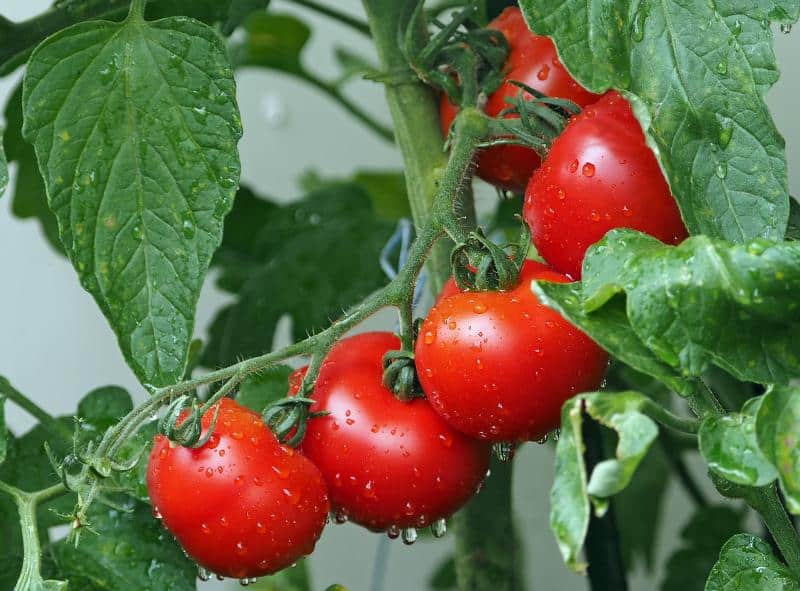
Tomatoes are one of the most popular garden vegetables, and for good reason. They’re easy to grow, delicious, and packed with nutrients. In Alabama, the fall season is an ideal time to plant tomatoes, as the cooler temperatures help to prevent diseases and pests that can plague summer crops.
- Varieties: Look for heat-tolerant and disease-resistant varieties like ‘Better Boy’, ‘Early Girl’, and ‘Patio’.
- Planting: Plant seedlings 18-24 inches apart in well-draining soil with a pH between 6.0 and 6.8.
- Support: Provide support with tomato cages, trellises, or stakes to keep plants upright and promote even fruiting.
- Watering: Water deeply once or twice a week, depending on weather conditions.
Cucumber: Refreshing and Versatile in the Fall Garden
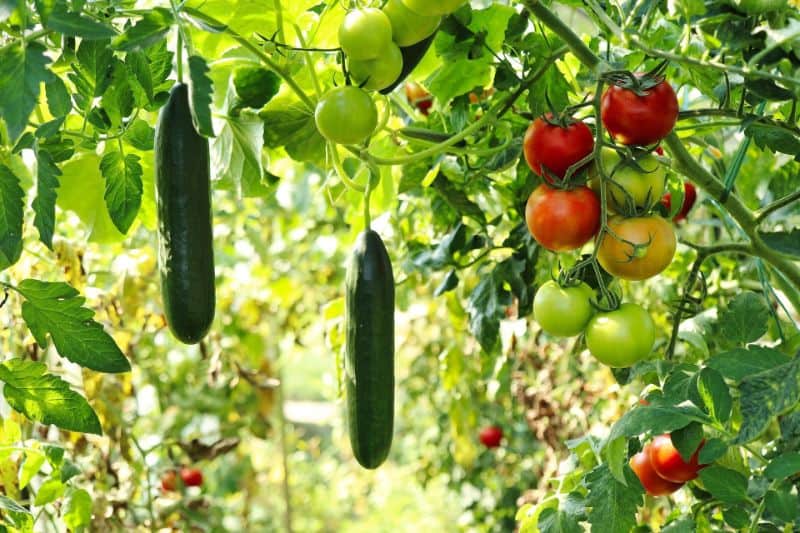
Cucumbers are a refreshing addition to any fall garden in Alabama, perfect for snacking, salads, and sandwiches. They’re also easy to train on a trellis or cage, making them a great choice for small gardens.
- Varieties: Look for varieties like ‘Slicing’, ‘Pickling’, and ‘English’ for different uses and flavors.
- Planting: Plant seeds 1 inch deep and 6-8 inches apart in well-draining soil with a pH between 6.0 and 6.8.
- Training: Train vines up a trellis or cage to save space and promote even fruiting.
- Watering: Water consistently, providing about 1 inch of water per week, either from rain or irrigation.
Eggplant: A Warm-Season Favorite for Alabama Fall Gardens
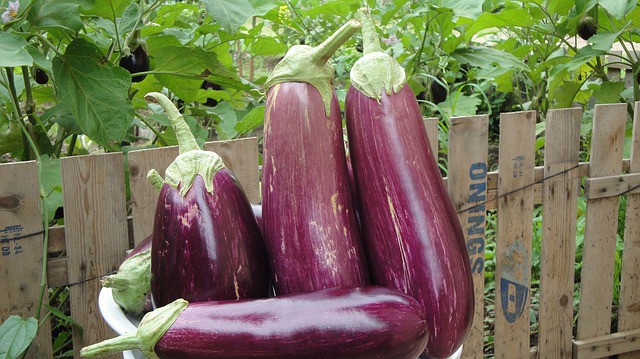
Eggplant is a popular fall garden vegetable in Alabama, and for good reason. This warm-season crop thrives in the state’s mild autumn weather, producing a bountiful harvest of delicious, tender fruit. When grown in the fall, eggplant plants have a natural advantage over their spring-planted counterparts, as they’re less susceptible to pests and diseases.
Choosing the Right Variety
When selecting an eggplant variety for your Alabama fall garden, look for types that mature quickly (around 60-70 days). Some popular options include ‘American Dream’, ‘Fairy Eggplant’, and ‘Hansel’. These varieties are bred for their compact growth habit, making them ideal for smaller gardens.
Planting and Care
Plant eggplant seedlings in late summer to early fall, about 8-10 weeks before the first frost. Space them 18-24 inches apart, and provide full sun and well-draining soil. Water consistently, but avoid overwatering, which can lead to root rot. Fertilize with a balanced fertilizer, and mulch around the plants to retain moisture and suppress weeds.
Pest and Disease Management
Common pests that target eggplant in Alabama fall gardens include hornworms, aphids, and spider mites. Keep an eye out for these pests and use organic or integrated pest management methods to control infestations. Regularly inspect your plants for signs of disease, such as yellowing leaves or black spots, and treat promptly if necessary.
Squash: A Nutritious and Versatile Fall Garden Staple
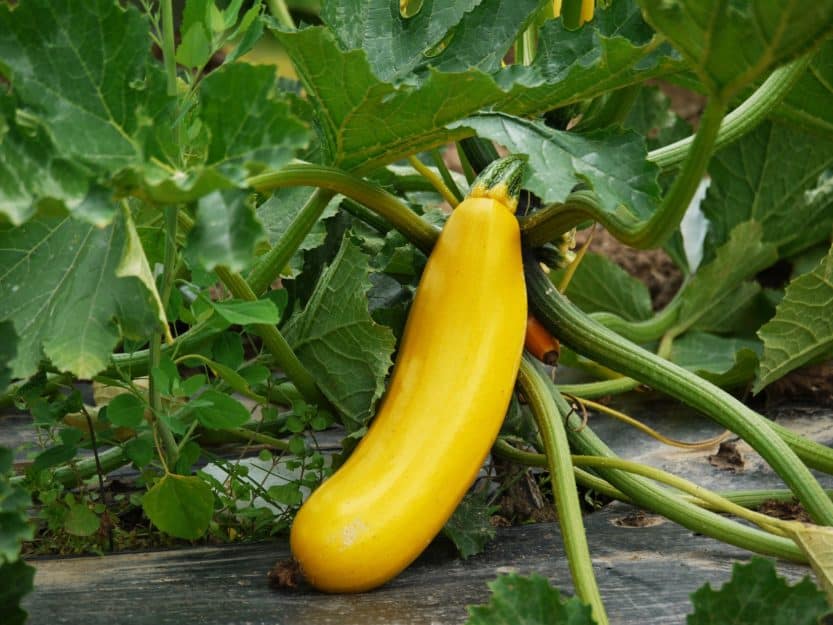
Squash is another versatile and nutritious fall garden vegetable that thrives in Alabama’s mild autumn climate. With its high water content and low calorie count, squash makes an excellent addition to a variety of dishes, from soups to casseroles.
Squash Types for Alabama Fall Gardens
There are several types of squash that excel in Alabama’s fall gardens, including:
- Acorn squash: A popular variety for its sweet, nutty flavor and compact growth habit.
- Butternut squash: Known for its sweet, creamy flesh and versatility in soups and baked dishes.
- Spaghetti squash: A fun, easy-to-grow variety that’s perfect for paleo and low-carb diets.
- Pattypan squash: A cute, round variety that’s ideal for sautéing or roasting.
Squash Planting and Care
Plant squash seeds in late summer to early fall, about 8-10 weeks before the first frost. Space them 3-5 feet apart, and provide full sun and well-draining soil. Water consistently, and fertilize with a balanced fertilizer. Mulch around the plants to retain moisture and suppress weeds.
Pumpkin: The Star of Alabama’s Fall Harvest
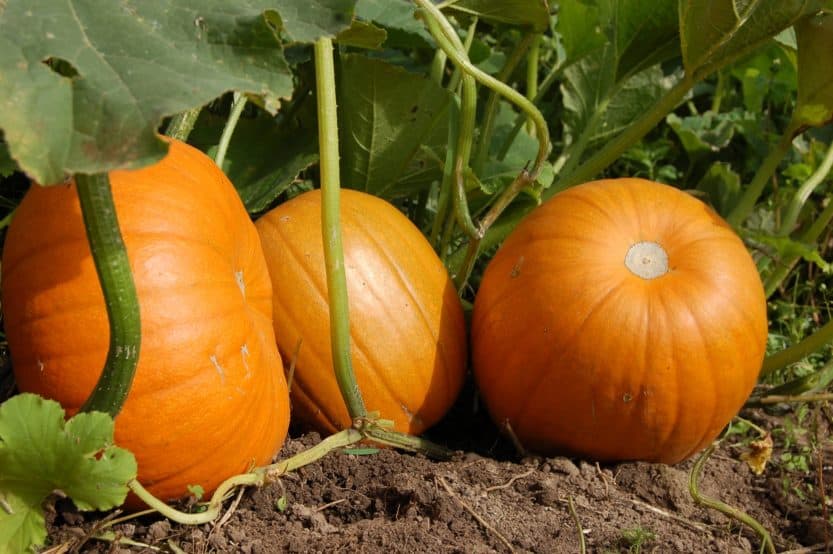
Pumpkin is one of the most iconic fall garden vegetables in Alabama, and for good reason. This beloved gourd is not only a staple for autumn decorations and cooking, but it’s also a nutritious and versatile ingredient for a variety of dishes.
Choosing the Right Pumpkin Variety
When selecting a pumpkin variety for your Alabama fall garden, consider the following factors:
- Days to maturity: Look for varieties that mature in 100-120 days or less.
- Size: Choose varieties that are suitable for your available space, from compact ‘Sweet Meat’ to sprawling ‘Atlantic Giant’.
- Usage: Decide whether you want to grow pumpkins for cooking, decoration, or both.
Pumpkin Planting and Care
Plant pumpkin seeds in late spring to early summer, about 4-5 weeks after the last frost. Space them 3-5 feet apart, and provide full sun and well-draining soil. Water consistently, and fertilize with a balanced fertilizer. Mulch around the plants to retain moisture and suppress weeds.
Tips for Growing Perfect Pumpkins
To grow perfect pumpkins in your Alabama fall garden, follow these expert tips:
- Provide a sturdy trellis or support system for vining varieties.
- Rotate your pumpkin crop annually to avoid depleting the soil of nutrients.
- Monitor for pests and diseases, and treat promptly if necessary.
- Harvest pumpkins when the rind is hard and the stem is dry, usually in late September to early October.
Peas: A Cool-Season Delight
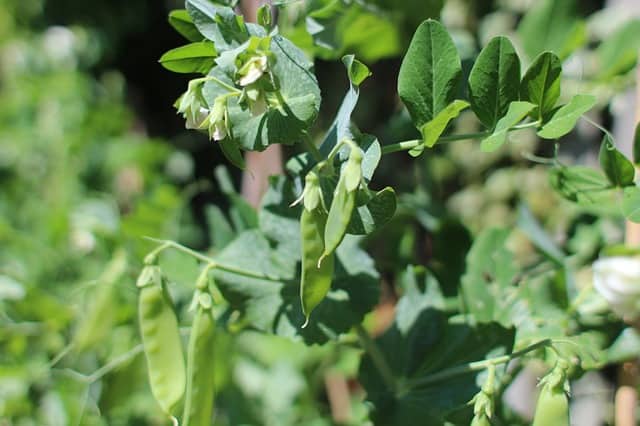
Fall is an excellent time to plant peas in Alabama, as the cooler temperatures allow for optimal growth and production. Sugar snap peas, snow peas, and shelling peas are all excellent options for the fall garden. These legumes thrive in the state’s mild autumn weather, producing delicious and crunchy pods.
- Plant peas 8-10 weeks before the first frost date in your area, typically around late August to early September in Alabama.
- Choose a variety that matures quickly, such as ‘Sugar Ann’ or ‘Snowbird’, which can be ready to harvest in as little as 50 days.
- Provide a trellis or cage for the peas to climb, and ensure the soil is well-draining and rich in organic matter.
- Keep the soil consistently moist, but not waterlogged, to promote healthy growth.
Potatoes: A Fall Favorite in Alabama
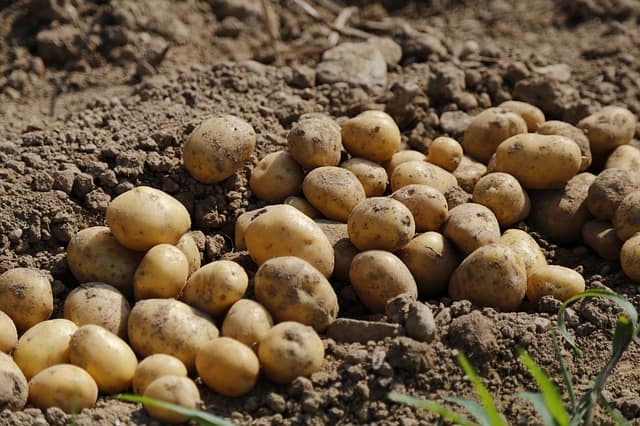
Fall is an ideal time to plant potatoes in Alabama, as the cooler temperatures reduce the risk of disease and pests. By planting in the fall, you can enjoy a second crop of potatoes before the winter sets in, providing a bountiful harvest.
- Plant potatoes in late summer to early fall, about 10-12 weeks before the first frost date in your area.
- Choose a variety that is specifically bred for fall production, such as ‘Katahdin’ or ‘Butte’, which mature in as little as 70-80 days.
- Plant seed potatoes (small, whole potatoes or pieces with at least one “eye” each) 2-4 inches deep and 12 inches apart, in rows 3 feet apart.
- Hill the soil around the plants as they grow, leaving only a few inches of the leaves exposed, to promote tuber formation.
Climate Considerations for Fall Gardening in Alabama
Alabama’s fall climate is characterized by mild temperatures, moderate humidity, and occasional rainfall. While these conditions are generally favorable for growing a wide range of vegetables, there are some key factors to keep in mind when planning your fall garden.
Fall temperatures in Alabama typically range from 50°F to 70°F (10°C to 21°C), making it an ideal time to grow cool-season crops. However, the state’s subtropical location means that the fall season can be quite short, with winter arriving as early as mid-November in some areas. This limited window of opportunity means that timing is everything when it comes to planting and harvesting your fall crops.
In addition to temperature, Alabama’s fall climate is also influenced by precipitation patterns. While the state typically experiences a decrease in rainfall during the fall months, occasional heavy rainfall events can still occur, particularly in the southern regions. This means that fall gardeners in Alabama should be prepared to provide adequate drainage and support for their plants to prevent waterlogged soil and root rot.


